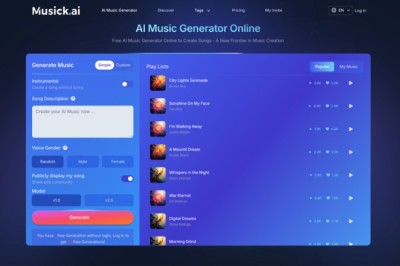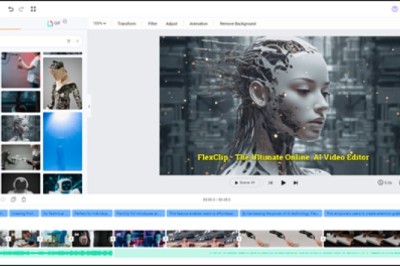views
Interpreting Industry: How Technology Revolutionized It 1
The Digital Dawn: Technological Revolution in Interpreting 1
Artificial Intelligence and Machine Learning in Interpreting 1
The Global Village: Breaking Down Language Barriers 2
The Rise of Remote Interpretation Services 2
Equipment for Simultaneous Interpretation: Redefining Real-Time Communication 2
Virtual Reality: A Game-Changer in Immersive Interpretation 2
Ethical Considerations in the Tech-Infused Interpreting Landscape 2
The modern business landscape is constantly changing, and few industries have undergone as significant a transformation as interpretation. Communication barriers are being dismantled, and the global exchange of ideas is becoming more seamless. In this blog, we explore the intricacies of the interpreting industry, examining how technology has become the driving force behind its evolution. Let's explore this technological metamorphosis's challenges, opportunities, and future implications, propelling the interpreting profession into uncharted territories.
The Digital Dawn: Technological Revolution in Interpreting
In recent years, the interpreting industry has undergone a profound transformation, primarily fueled by technological advancements. Gone are the days of traditional face-to-face interactions being the sole method of communication in multilingual settings. Instead, digital tools and platforms have become integral, revolutionizing how interpreters ply their trade. The advent of cloud-based platforms, artificial intelligence, and machine learning has not just streamlined the interpretation process. Still, it has also empowered interpreters to manage and analyze vast amounts of linguistic data, refining their skills and adapting to the nuances of evolving language trends.
Artificial Intelligence and Machine Learning in Interpreting
Artificial Intelligence (AI) and machine learning algorithms have become key players in the interpreting landscape. These technologies can now process vast amounts of linguistic data, improving the accuracy and speed of interpretation. AI-powered language models can adapt to nuances in speech, dialects, and even cultural contexts, enabling interpreters to deliver more precise and culturally sensitive translations. This intersection of language and technology represents a dynamic force shaping the modern industrial landscape.
The Global Village: Breaking Down Language Barriers
Digital communication tools have turned the world into a global village, but language barriers remain a significant obstacle. Technology, however, has stepped in to bridge this gap. Real-time translation applications, virtual meeting platforms, and language processing tools have empowered interpreters to facilitate seamless communication between speakers of different languages. This fosters international cooperation and propels businesses and organizations into a new era of interconnectedness.
The Rise of Remote Interpretation Services
One of the most notable shifts in the interpreting industry is the rise of remote interpretation services. Technology has enabled interpreters to work from anywhere in the world, breaking the constraints of geographical boundaries. Virtual platforms have become the new stage for interpreters, allowing them to cater to a global audience without needing physical presence. This evolution has expanded the reach of language services and introduced a new dynamic to the traditional model of on-site interpretation.
Equipment for Simultaneous Interpretation: Redefining Real-Time Communication
The heart of the modern interpreting industry lies in the cutting-edge equipment for simultaneous interpretation. This technology has redefined real-time communication in multilingual settings, allowing interpreters to convey messages seamlessly across language barriers. Whether in conferences, international meetings, or virtual events, the right equipment for simultaneous interpretation ensures clear and accurate communication. This technological advancement represents a cornerstone in the evolution of the interpreting landscape.
Virtual Reality: A Game-Changer in Immersive Interpretation
Virtual Reality (VR) has emerged as a game-changer in the interpreting industry, offering immersive experiences for language users. VR platforms simulate realistic environments, enabling interpreters to engage in lifelike scenarios like business meetings or conferences. This innovation enhances the interpretation quality and provides users with a more engaging and interactive experience. As technology advances, the integration of VR into interpreting services is expected to become increasingly prevalent.
Ethical Considerations in the Tech-Infused Interpreting Landscape
As technology cements its role in the interpreting landscape, ethical considerations become increasingly crucial. The integration of AI, machine learning, and virtual reality raises questions about data privacy, cultural sensitivity, and the potential displacement of human interpreters. Striking a balance between the efficiency of tech-driven solutions and the nuances of human communication requires careful navigation. Ethical guidelines must evolve alongside technological advancements to ensure that the benefits of innovation in the interpreting industry are harnessed responsibly. As the sector continues to embrace the digital era, addressing these ethical considerations becomes paramount in maintaining the integrity and effectiveness of language services on a global scale.
Conclusion
In conclusion, the interpreting industry navigates a transformative journey propelled by rapid technological advancements. The landscape continues to evolve as interpreters adapt to the changing dynamics, embracing AI, remote services, and cutting-edge equipment for simultaneous interpretation. The future promises a more interconnected, accessible, and efficient global communication network where technology catalyzes breaking down language barriers and fostering meaningful cross-cultural dialogue.
























Comments
0 comment